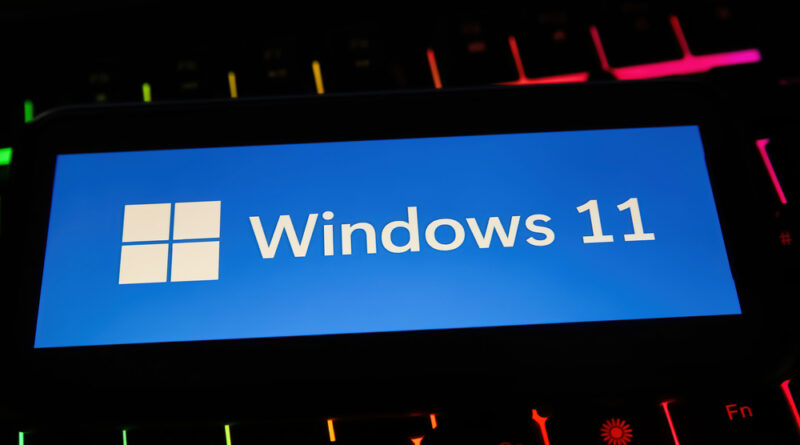Windows 11 vs Linux for Business: Navigating the Digital Divide
In today’s rapidly evolving technological landscape, businesses face a critical crossroads when selecting the operating system that will drive their productivity, security, and overall IT strategy. While Windows 11 has long been a staple in corporate environments, Linux is increasingly being recognized as a powerful alternative—each with its own distinct advantages and challenges. This feature article delves into the essential considerations for businesses when choosing between these two operating system giants.
A Familiar Face vs. The Open-Source Frontier
Windows 11: A Seamless User Experience
Windows 11 is renowned for its modern, user-friendly interface that minimizes the learning curve for employees. Its broad compatibility with industry-standard applications, including popular office suites and specialized business tools, means that organizations can integrate new systems without significant disruption. Moreover, Windows 11’s deep integration with the Microsoft ecosystem—especially services like Microsoft 365—streamlines collaboration and enhances productivity for teams accustomed to a unified digital workspace. However, this ease of use comes at a price; the operating system is resource-intensive and often necessitates more powerful hardware, while licensing fees and ongoing upgrade costs can add up quickly for larger organizations.
Linux: Flexibility and Customization for the Tech-Savvy
In contrast, Linux stands apart due to its open-source nature, offering unparalleled flexibility and customization. For organizations with the in-house technical expertise, Linux presents a robust environment that can be tailored to meet specific business needs. The command-line interface, although initially daunting for some users, provides system administrators and developers with a powerful tool for fine-tuning performance and security. Linux is particularly attractive for server applications and development environments where stability and cost-efficiency are paramount. Despite its many advantages, Linux can introduce challenges in software compatibility, as not all proprietary applications are available on this platform—a factor that businesses must weigh carefully.
Interface, Integrations, and the Learning Curve
The decision between Windows 11 and Linux often comes down to the balance between familiarity and customization.
-
Windows 11: Its sleek, modern interface is designed for ease of use, making it an excellent choice for organizations where minimal training and rapid deployment are key priorities. The operating system’s seamless integration with widely used applications helps maintain continuity and efficiency across departments.
-
Linux: With a range of desktop environments such as GNOME and KDE Plasma, Linux allows businesses to tailor the user experience to their specific needs. However, the flexibility of Linux often comes with a steeper learning curve, potentially requiring additional training and support for staff transitioning from more conventional operating systems.
For businesses with established workflows centered around Microsoft products, Windows 11 offers an immediate, hassle-free integration. Meanwhile, companies that prioritize open-source adaptability and have dedicated technical teams may find Linux to be a superior long-term investment.
Support Structures: Centralized vs. Community-Driven
Support is another critical factor in choosing the right operating system.
-
Windows 11 benefits from a centralized, structured support system provided by Microsoft. This includes comprehensive online documentation, dedicated customer support channels, and community forums. For companies that favor a single point of contact for troubleshooting and updates, this can be a significant advantage, particularly in high-stakes environments.
-
Linux, on the other hand, offers a decentralized support ecosystem. The open-source community fuels a wealth of forums, tutorials, and third-party commercial support options. This model offers flexibility and a wide range of expertise, but it also means that businesses might need to invest time in identifying and coordinating with the right support channels for their specific needs.
Ultimately, the decision here depends on an organization’s preference for a more hands-on, community-driven approach versus a streamlined, centralized support structure.
Pricing: Balancing Upfront Costs and Long-Term Savings
Cost considerations play a pivotal role in the operating system debate:
-
Windows 11: While providing a polished, integrated user experience, Windows 11 comes with significant licensing fees, which can quickly escalate in large-scale deployments. The total cost of ownership must also factor in potential hardware upgrades and ongoing maintenance.
-
Linux: In stark contrast, Linux distributions are often available for free, presenting an attractive option for businesses aiming to minimize upfront costs. However, the absence of licensing fees does not necessarily equate to zero cost—organizations may still incur expenses related to specialized support, training, or custom development to fully leverage Linux’s capabilities.
For companies with tight IT budgets or those seeking to reallocate resources toward innovation, the cost-effectiveness of Linux might tip the scales. Conversely, businesses that rely heavily on specific proprietary software may find that Windows 11’s ecosystem justifies the investment.
The Verdict: Aligning Choice with Strategic Goals
Choosing between Windows 11 and Linux is less about identifying a “one-size-fits-all” solution and more about aligning the operating system with your organization’s unique requirements and long-term strategic objectives.
-
Windows 11 is ideally suited for businesses that prioritize user-friendliness, extensive software compatibility, and seamless integration with Microsoft’s suite of services. Its structured support and familiar interface make it an appealing choice for organizations that prefer a straightforward, out-of-the-box solution—even if it comes with higher costs.
-
Linux offers a compelling alternative for companies that value customization, cost-effectiveness, and robust performance, especially in server environments and development operations. While the learning curve may be steeper, the potential for lower ongoing costs and the flexibility of an open-source platform can provide significant advantages for the right business.
Ultimately, the choice hinges on the specific needs, technical expertise, and financial constraints of your organization. For those who rely on industry-specific Windows applications and favor an environment with streamlined support, Windows 11 remains a strong contender. Meanwhile, for organizations ready to harness the power of open-source technology and embrace a more flexible IT framework, Linux presents an opportunity to innovate and save costs in the long run.
In this dynamic digital era, the best approach is to conduct a thorough evaluation of your business’s operational requirements and strategic goals—ensuring that the chosen operating system not only meets today’s demands but also scales effectively into the future.
Photo Credit: DepositPhotos.com

